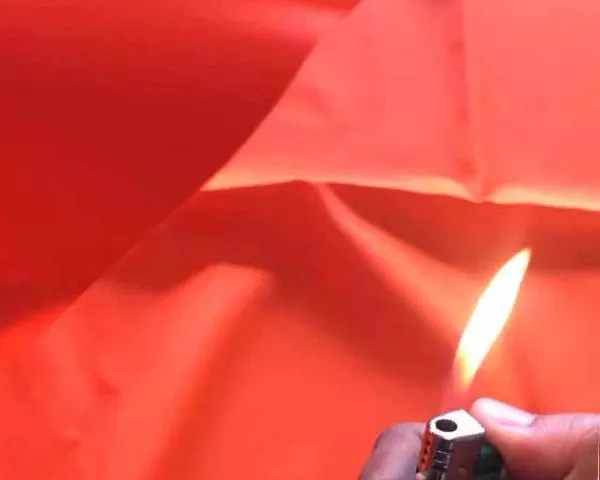How Can Fabric Be Treated With a Fire Retardant?

When you want to make your baby’s crib more safe, you can have it treated with a fire retardant. Flame retardant materials can be applied to natural fibres and synthetic fabrics. This makes them less flammable, and in some cases, completely incombustible. These materials act by reacting with the gasses within the fabric and slowing down the speed at which it burns.
Chemical dipping
Fire retardant fabrics are commonly used in clothing and uniforms for firefighters, industrial workers and military personnel. They are also used in tents, parachute fabric and professional motor racing apparel. These fabrics are resistant to high temperatures and protect against both fire and electrical shocks. While this technology is popular in the commercial sector, it is also used in the home and indoors. The main purpose of this process is to protect lives and protect infrastructure against fires.
In a study, nylon fabrics were treated with the FR additive (44). After being dipped in a solution containing FR polymer and crosslinker, these fabrics were dried at 150 degC. They were then rinsed and dried again. The samples were analyzed by MCC and TG to determine their decomposition rates. Both compounds increased the amount of char on the surfaces of the fabrics.
Natural fibers
A natural fiber’s flame retardancy is determined by the composition and crystallinity of its components. The composition also influences how the fibre will react to fire, including the rate of flame propagation, smoke evolution, and afterglow. A natural fiber’s fire resistance is much better than its synthetic counterpart. Synthetic fibers, on the other hand, are made of chemical compounds and hydrocarbons, and are usually mixed with a natural fiber to increase fire resistance.
A bio-based flame retardant treatment is necessary to improve the fire resistance of natural fibers in engineering applications. Bio-flame-retardant liquid, or BFL, is made from bio-waste by-products like chitosan and phosphoric acid. To assess the BFL’s effectiveness, researchers performed various tests, including scanning electron microscopy, Fourier-transform infrared spectroscopy, thermogravimetric analysis, and microcalorimetry.
Synthetic fabrics
The fiber content of a fabric determines its fire resistance. Natural fibers come from plants and animals while synthetic materials come from petroleum and chemical compounds. Natural fibers are cotton, wool, silk, hemp, bamboo, and leather, while synthetic fabrics come from hydrocarbons and chemical compounds. Synthetic fabrics are made from polyester, nylon, and acrylic, and may also contain Ramids like Kevlar, Nomex, and Carbon-X.
The chemical treatments that make synthetic fabrics flame-retardant include glass fibers, modacrylic, and polypropylene. Certain polyesters are slow to ignite and may self-extinguish if the fire spreads without consuming them. Wool and silk are comparatively flame-retardant and slow to burn. Other types of fabrics are flame resistant, such as polyester-cotton blends.
Crib 5 test
The Crib 5 test for fabric treated with flammability-retardant materials determines how well a piece of fabric can survive a fire. Fabrics that pass this test do not ignite or smoulder and must extinguish completely within ten minutes of contact with fire. Fire resistance varies between fabrics, as does their natural flame resistance. The fabric must pass the test by stopping the spread of flames by at least 75mm deep.
Although the Crib 5 test for fabric treated with flammability retardants is important for protecting children from fire hazards, it is not necessary to use all of these fabrics. Some upholstery materials can only be treated under certain conditions. For example, upholstery made from more than 70% polyester or acrylic can fail the test. It’s also more difficult to treat furniture that is made from these fabrics with normal chemicals. Also, flammability increases when a fabric has a lumpy surface.




